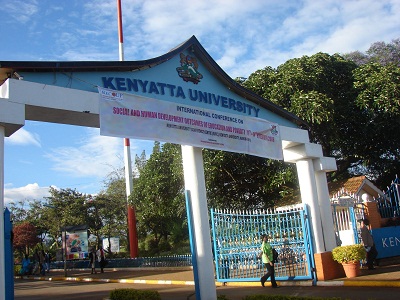The interim Government of South Sudan (GoSS) has requested that telecoms companies operating in the region suspend work until the administration publishes new regulations for the sector, with no specific target date for the regulations to be published. Some early regulation methodologies were discussed in February of this year, when leaders in the ICT industry affiliated with South Sudan met with the Commonwealth Telecommunications Organisation (CTO) and discussed a possible three-year strategic plan for the new nation.

Photo: CIO East Africa
In October 2010, CTO helped GoSS organize a conference, entitled ICT4D: Southern Sudan. From the conference and a previous ICT strategy report created by Pricewatershouse Coopers LLC in 2008, GoSS and CTO drafted an inception report during the consultation visit in February 2011, but they did not create any official policies. The strategic plan includes involving ICTs in all sectors of Sudan’s infrastructure and economy. CEO Dr. Ekwow Spio-Garbrah of the CTO exclaimed his excitement: “This new nation will have the opportunity to not merely leap-frog, but to cheetah pole-vault over other nations, if it is methodical about its approach in the ICT and other sectors.”
Currently, though, telecommunication companies in South Sudan are in limbo. CEO of Zain telecoms, Hisham Mustafa Allam, said he could not be ‘100 per cent’ sure that the company’s mobile license would be valid in South Sudan after July. ‘There’s potential for South Sudan, but there are big challenges,’ he said, adding: ‘One of the problems we have right now is it costs lots of money to build sites and do a rollout (of fiber) in the south.’ South Sudan will have to rely on fiber from Kenya and Uganda, making the costs potentially quite high. Zain has reportedly invested 20% of its total expenditures in the south of Sudan, including around 150 base stations.
South Sudan carried out a national survey in 2009, but did not include questions regarding Internet access. However, only 15% of households own a phone, including 8% in rural areas and 59% in urban areas (primarily in the capital city, Juba). The lack of households with phones indicates a lack of electricity and connectivity possibilities in general.
Despite these difficulties, broadband connectivity is within reach. There are three current submarine cables that run to Port Sudan, in the north. From Port Sudan, there is a terrestrial backbone network that extends to major urban areas in the north of Sudan. However, no cables have been laid in South Sudan and there are no plans to connect the backhaul cables in the north with the south, as seen in the map pictured. These cables are:
- EASSy – (an East Africa Submarine Cable System with endpoints in South Africa and the Sudan)
- FLAG FALCON – (FLAG Alcatel-Lucent Optical Network) – (Egypt, Sudan, Yemen, Saudi Arabia, Bahrain, Qatar, UAE, Kuwait, Oman, India, Maldives)
- SAS-1 – (Saudi Arabia-Sudan)
However, there are a series of cable networks near South Sudan that could potentially be expanded into the country:
- KDN – Terrestrial cables have been laid and are under-construction in Kenya, Uganda, and Tanzania. Discussions are underway to route the cables north to Juba.
- Seacom – Involved in the undersea EASSy cables along the coast of East Africa. They announced in June 2011 that they were going to move inland, working with governments of Burundi, Southern Sudan, and Somalia to make a terrestrial cable link in the Somali Cluster (also known as the East African Community – EAC). Most likely, Seacom will partner with KDN and Altech, among other partners.
- WIOCC – The largest investor at 29% in the EASSy cable system, the West Indian Ocean Cable Company is comprised of the main telecommunications firms in twelve African countries (listed below). They are constructing East African terrestrial backhaul cables, including a cable line from Kampala, Uganda to Khartoum, Northern Sudan. This line appears to run directly through Southern Sudan, with no plans to land the cable until Khartoum.
- Botswana Telecommunications Corporation
- DALKOM Somalia
- Djibouti Telecom
- Gilat Satcom Nigeria
- Government of Seychelles
- Lesotho Telecommunications Authority
- Onatel Burundi
- TDM Mozambique
- Telkom Kenya
- UCOM Burundi
- Uganda Telecom Limited
- Zantel Tanzania.
- INTELSAT – Their satellite New Dawn has alleged potential to cover most of Africa, with the highest bandwidth in West Africa. No private companies in Sudan, nor the Sudanese government, has partnered with them to construct a point of contact.
- Umojanet – The African Union program “Nepad” wants to create a terrestrial cable system throughout the African continent, which they call Umojanet. Nepad first expressed this dream in 2000.
In addition to private sector investments in broadband infrastructure, national governments near in East Africa are also investing in fiber optic cables. Their willingness to politically and financially support national broadband networks makes the possible of public-private partnerships more possible. As reported by Seacom in June 2011:
- The governments of the East African Community (EAC) are investing over US$400 million in their respective national backbone infrastructure. The cables cover more than 20,600 km.
- Rwanda completed a 2300km cable costing more than $60 million.
- Tanzania continues to lay its $170 million, 10,000km plus cable.
- Burundi is also laying out the cable of 1300 km with the help of $10.5 million grant from the World Bank.
- Uganda, acquired a Chinese loan of about $102 million to implement the 2,000km plus cable.
- Kenya is also investing $60 million in the National Optic Fiber Backbone Infrastructure (NOFBI). Some 5,000km of the cable had been laid down by June 2010.
Given these investments, South Sudan will feel pressure to compete with its neighbors in the ICT industry, potentially leading the government to support their own national networks and backhaul system. Yet, given the tremendous financial burdens that the government will have in all of its sectors of development, much of the success regarding the ICT and telecommunications industries will depend on public-private partnerships.

















































